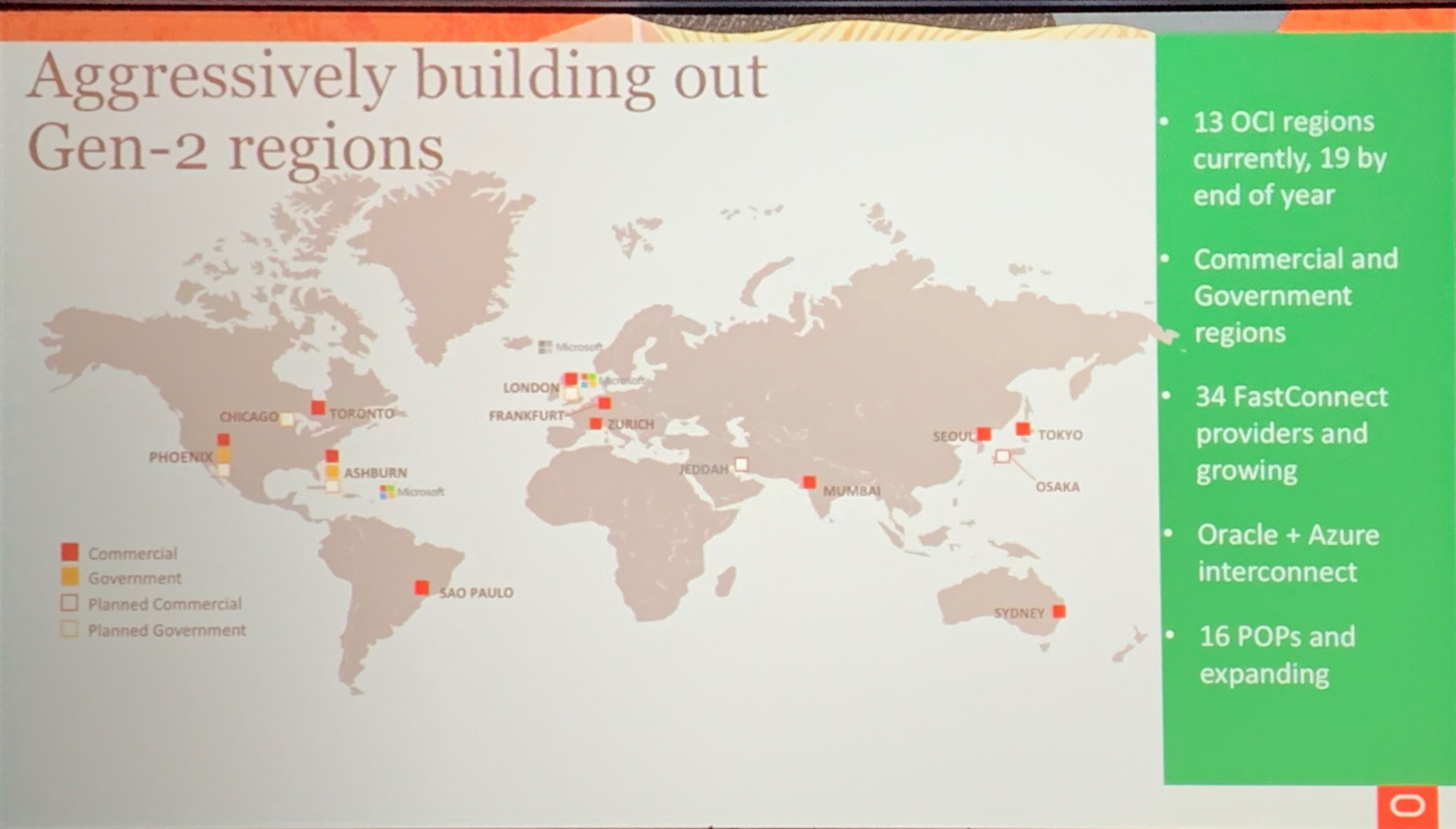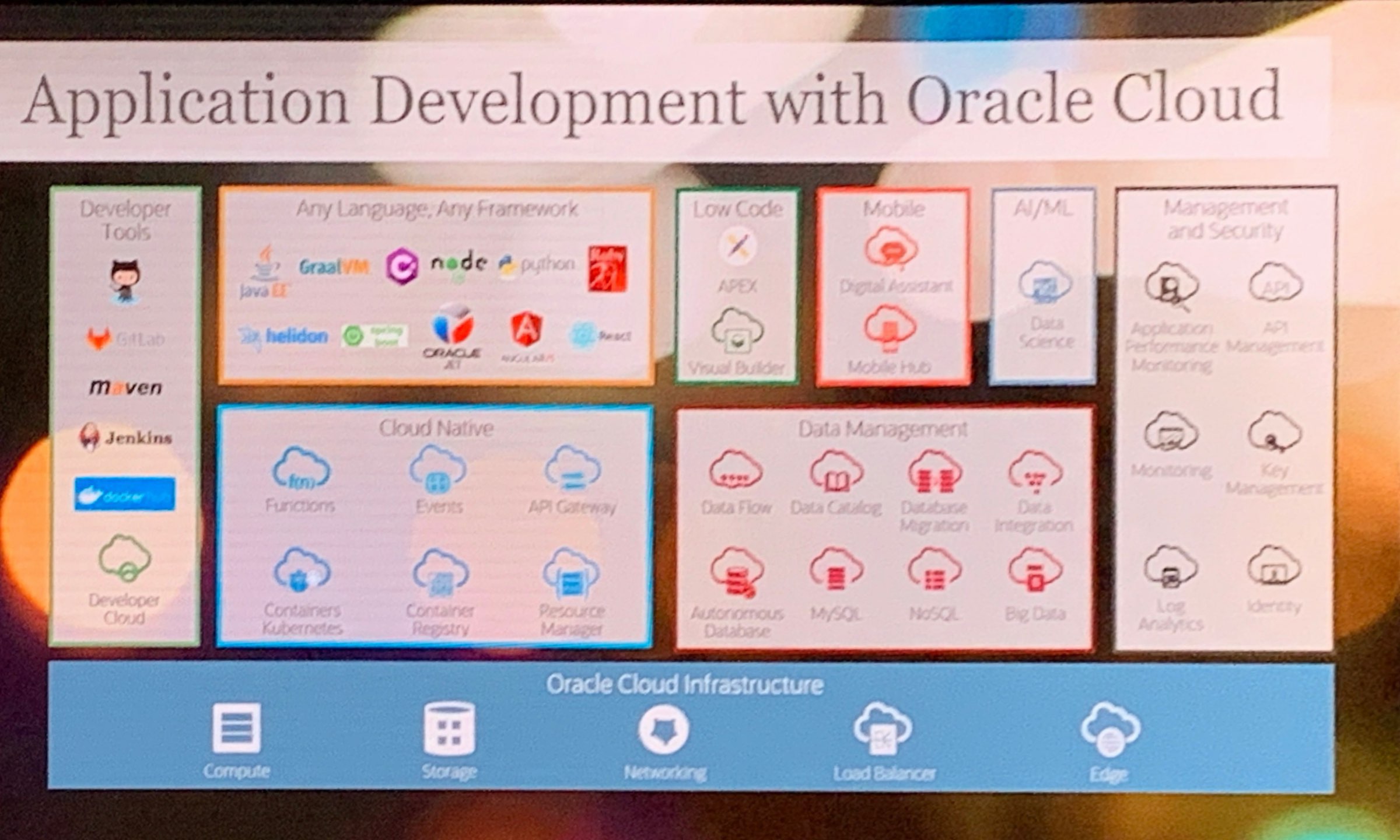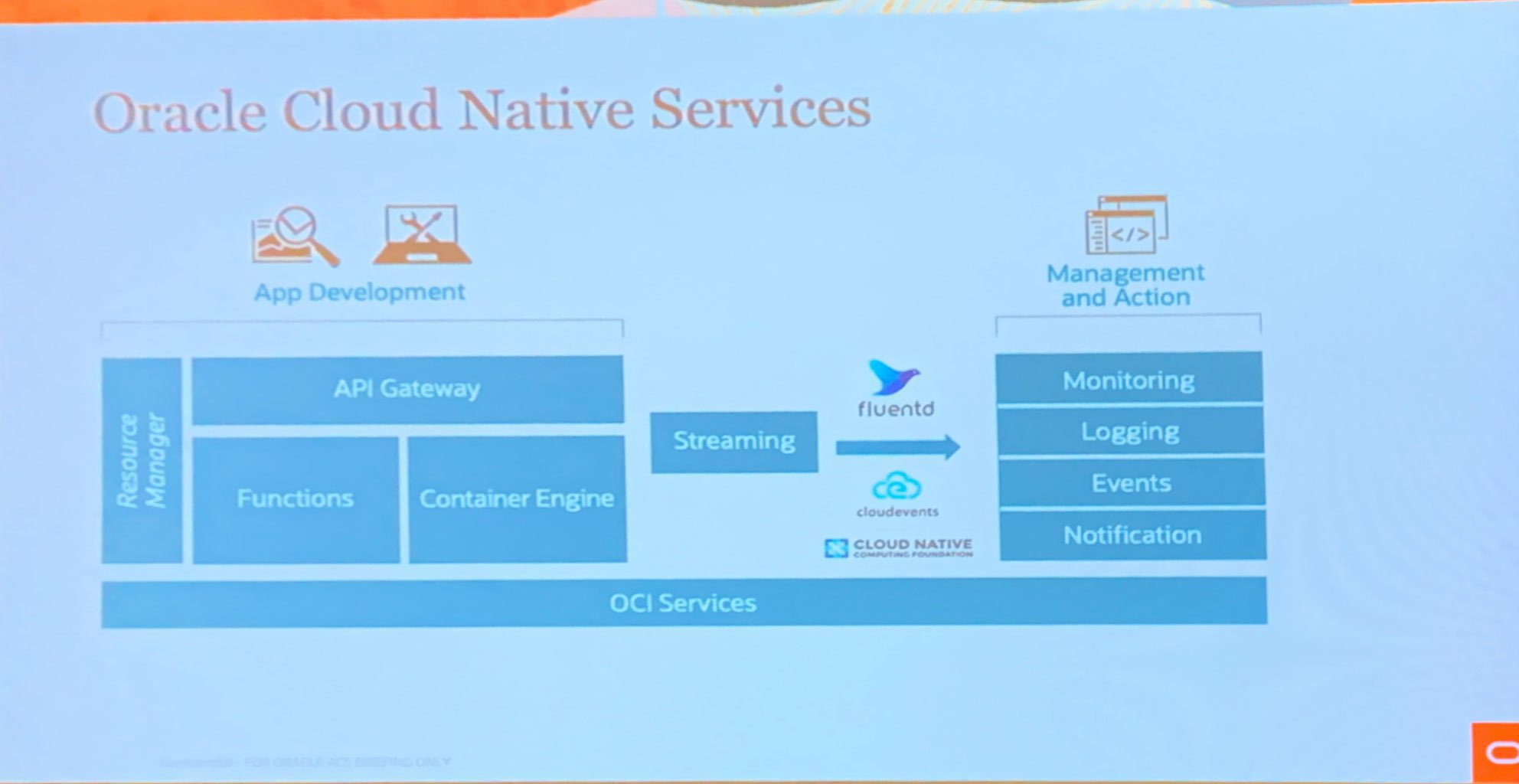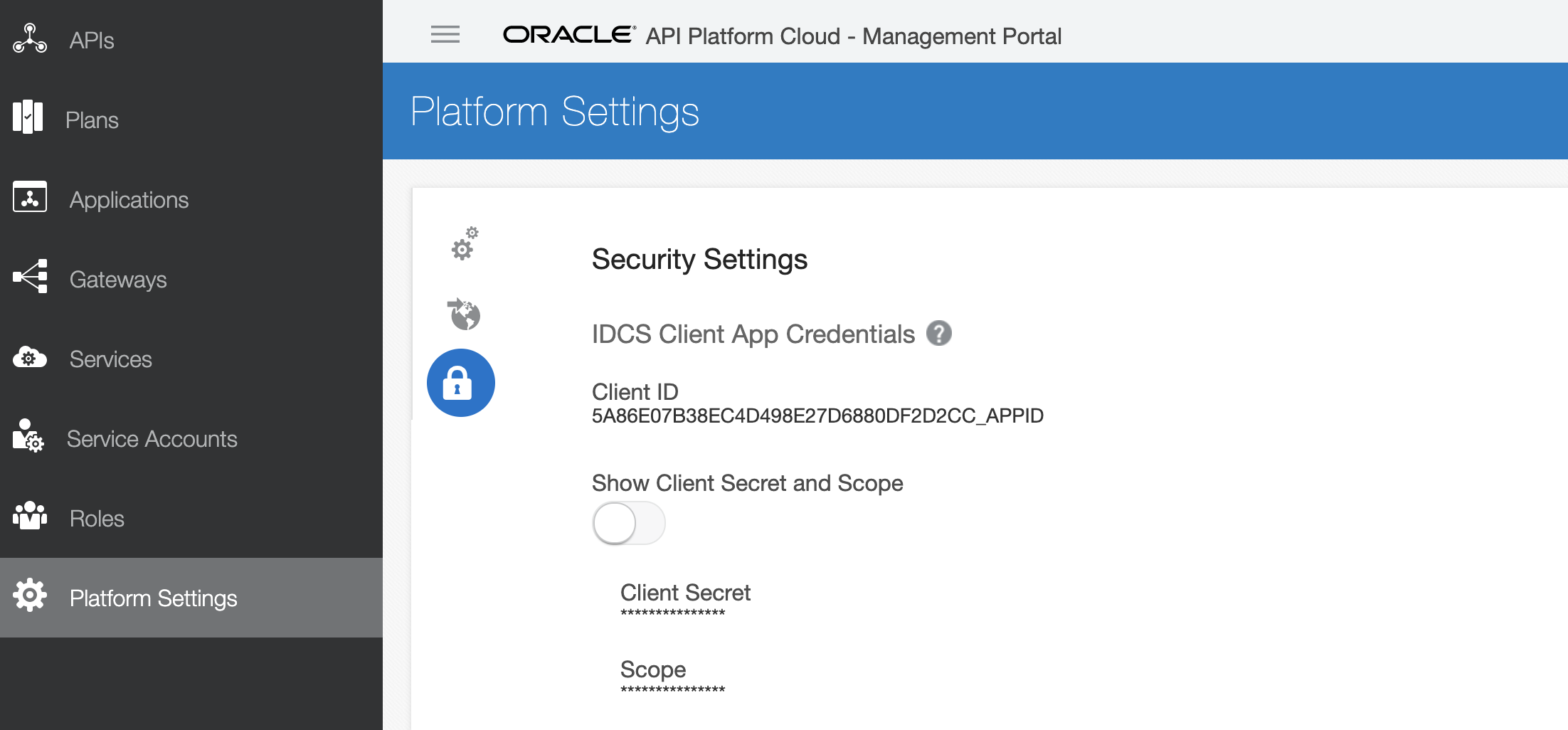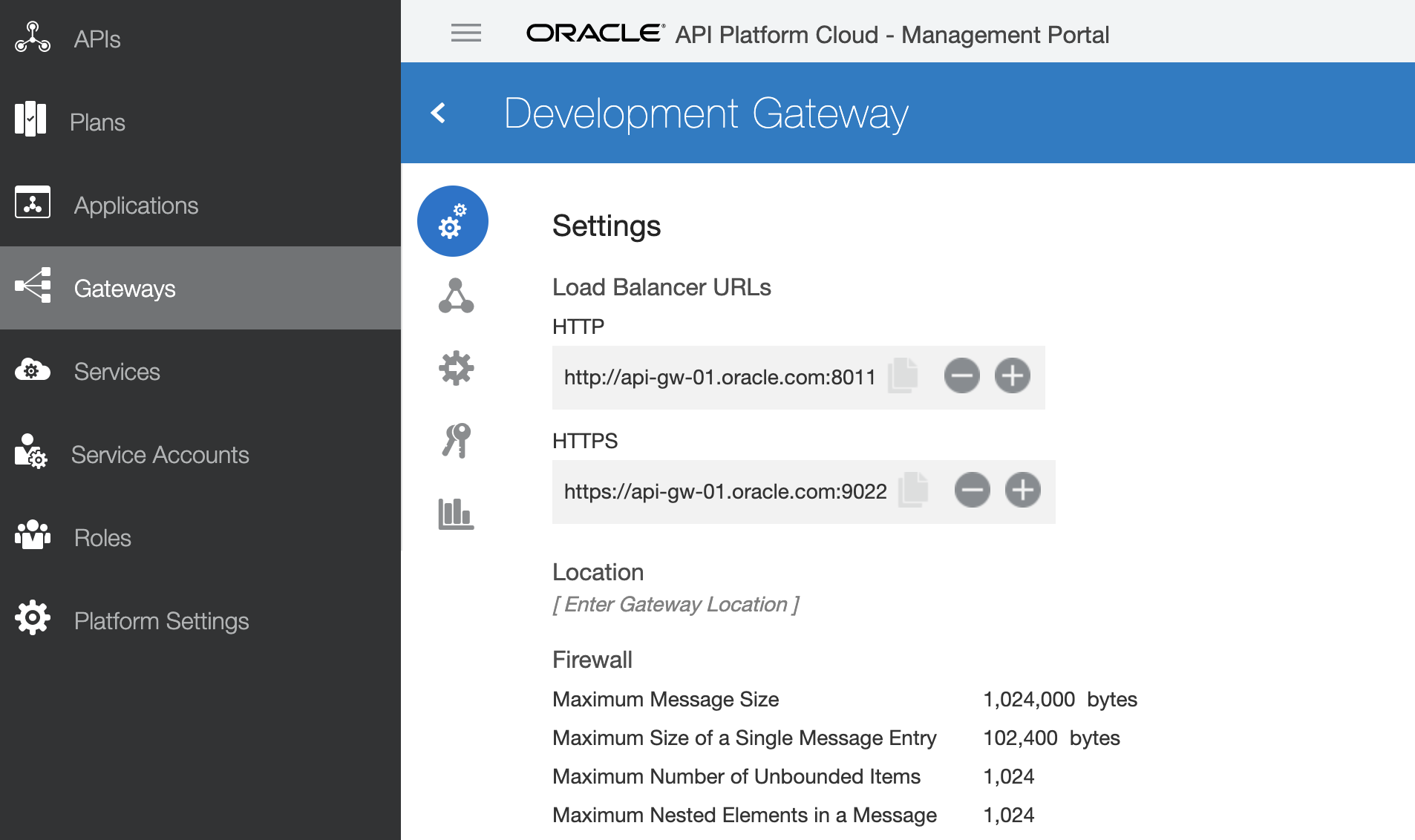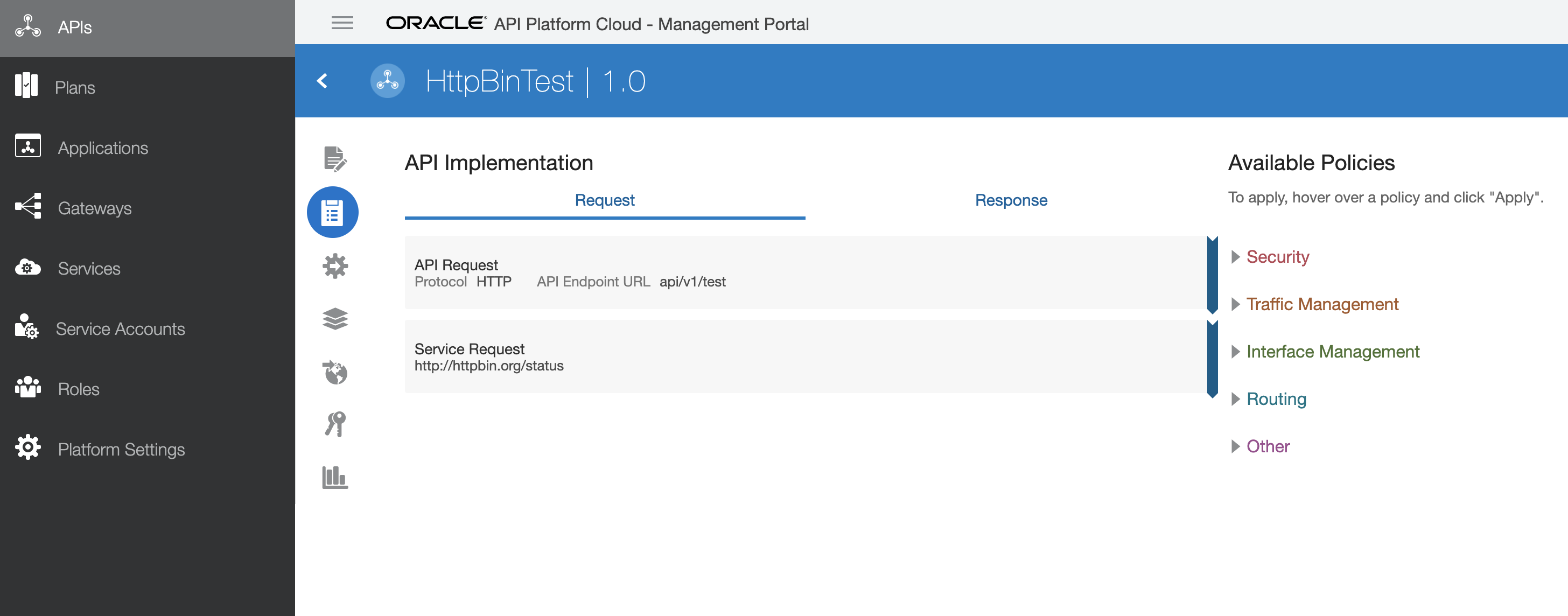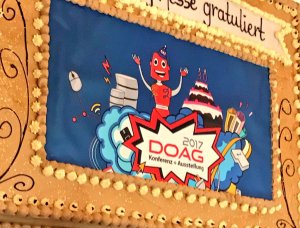Oracle Open World 2018 is over, so it’s time to take a step back and replay about what happened during some interesting days fully-packed with great and useful information.
Oracle Gen2 Cloud Infrastructure – the big thing in IaaS
Oracle Gen2 Cloud Infrastructure (OCI), is intended to deliver a better Performance (Compute, Memory, Block Storage, Network) and a better Pricing to customers than the Gen1 infrastructure.
From an architectural perspective Oracle’s new Cloud infrastructure is more than just a facelift, since it has been re-designed from the ground up.
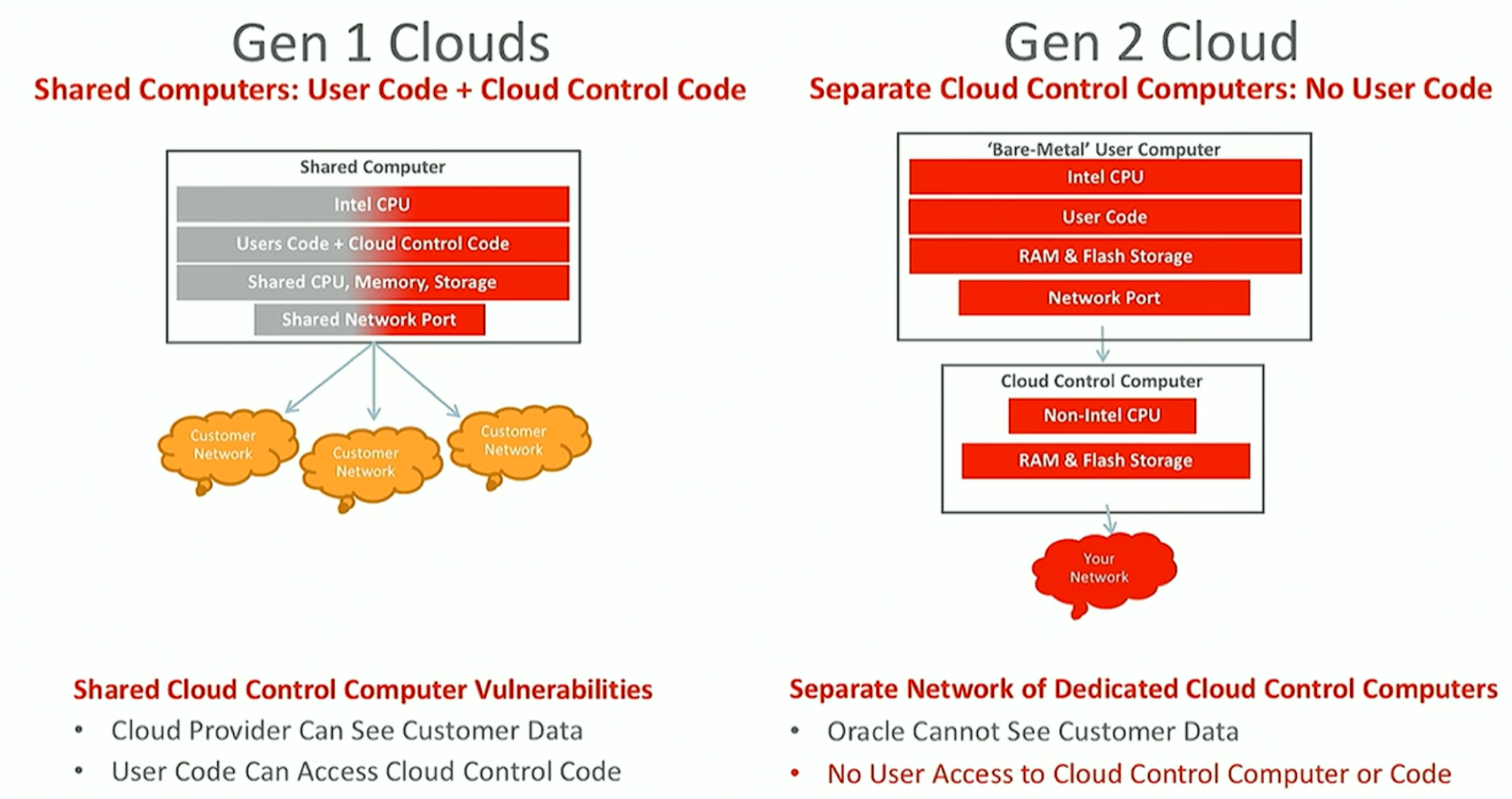
As the picture above shows, Oracle introduced a completely new tier: the Cloud Control Computers. These specific components, called the impenetrable barrier, run all Cloud control code. Before, the Cloud control code was co-located with all customer code, which was suspect to be less secure and vulnerable. The Cloud Control computers surround the Oracle Cloud infrastructure to protect the Cloud as such and additionally surround each customer zone. This leads to enhanced security and more data privacy.
In addition to the impenetrable barrier, Oracle introduced so called Autonomous Robots that detect and kill potential threats automatically. To be able to identify those threats, the Robots are empowered by Machine Learning algorithms and so protect the Oracle Gen2 Cloud infrastructure for attacks.
OCI is already available in most regions today and will also be available for Cloud@Customer in Summer 2019.
Oracle Autonomous Database
The Oracle Autonomous Database was already announced during last years Open World; now the vision seems to be compete. The Database can be used for implementing transaction-intense applications (OLTP) as well as for defining analytics applications (OLAP, Oracle Autonomous Data Warehouse) and leverages the new OCI infrastructure. In the context of the Autonomous Database autonomous Robots are responsible for:
- Provisioning
- Scaling
- Tuning (tuning is constantly applied)
- Recovery
- Patch & update
- Fault-tolerant failover
- Backup & Recovery
Doing so, the Database is supposed to be more stable and available (Availability: 99.995%) and should allow Developers and Administrators to focus on more important questions with respect to data organisation and business logic.
From an architectural perspective, Oracle Autonomous Database is designed in a Serverless fashion, which means that customers only need to pay when data is actively processed. When the Servers are idle, nothing needs to be paid – with the exception of storage.
OCI Security announcements
The Security topic was very prominent this year. For the OCI infrastructure the following new announcements in this area were made:
- Key Management Service– Store & Manage all encryption keys for all storage layers
- Cloud Access Security Borker (CASB)– Automated, continuous security monitoring and management (e.g. configuration changes done by potential attackers)
- Web Application Firewall– Web application traffic inspection
- Distributed Denial of Service Protection– Automated DDoS attack detection and mitigation of high volume layer 3 & 4 attacks
With that the OCI offering becomes more secure and trustworthy, so that customers have less to worry about data security in the Cloud.
News and noteworthy from the SaaS and PaaS space
Oracle SaaS and PaaS solutions are leveraging from the innovations for Oracle Gen2 Cloud infrastructure, since the respective solutions are running upon the IaaS components.
Oracle SaaS
In the SaaS space, Oracle claims the market leader position, especially in the Cloud ERP space. Bringing existing on-premise customers to Oracle Fusion SaaS is something were Oracle is working on hard, to make this journey as easy as possible. In addition, it should be done at a very low-cost level and in the shortest possible period, which is depending on the number of customisations built in the existing on-premises solution.
Talking about customisations Larry Ellison said: “We love extensions, extensions are great! We have these great tools for extensions to our SaaS applications.”, and he further explained that customisations are not welcomed. From a long-term maintenance perspective, this is comprehensible.
With great tools, Ellison points amongst others to the integration accelerators that can be used to integrate Fusion SaaS apps and the respective data with other applications. Regarding data integration and analytics of the existing Fusion data Oracle introduces the brand new Fusion Analytics Data Warehouse that is build upon Oracle Autonomous Data Warehouse as well as the Oracle Analytics Cloud Service (PaaS), which is intended to make data analytics very easy and efficient by just pushing a button.
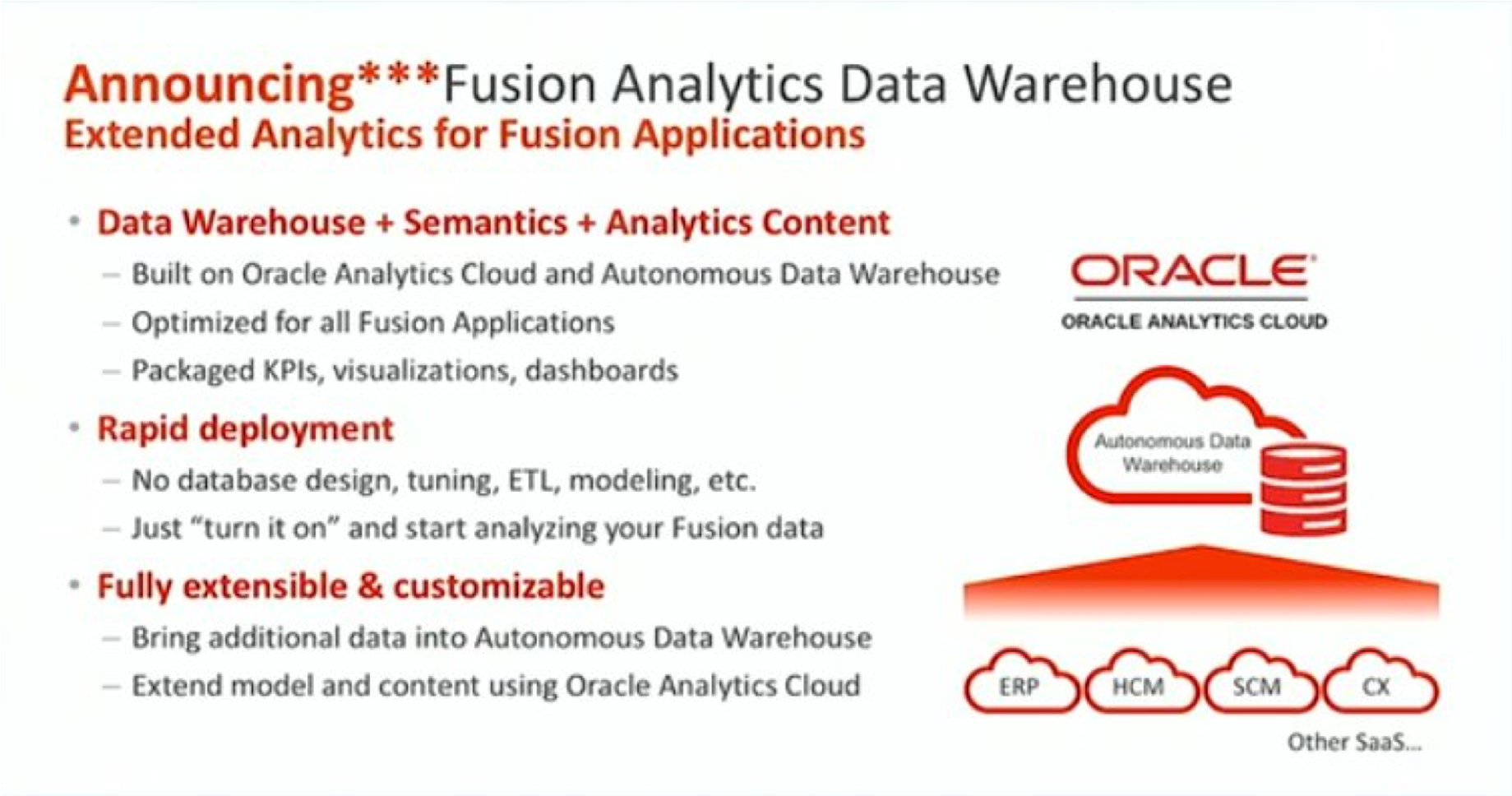
Oracle PaaS
Machine Learning (ML) and Artificial Intelligence (AI) seems to be very popular nowadays and omnipresent at a lot of presentations at Open World this year, as already mentioned in this post, while talking about OCI and the concept of the autonomous Robots.
That Oracle takes the topic seriously, shows itself also by the announced acquisition of the Cloud-based AI data engine company DataFox for undisclosed terms. The acquired tech will enhance Oracle Cloud Applications and the Data as a Service offering.
“Machine learning is a technology as revolutionary as the internet” (Larry Ellison, CTO Oracle)
ML and AI technologies (and therefore the Autonomous Data Warehouse, which provides the data basis) are also the basis for the newly announced Oracle Digital Assistant, which is the next evolution level of Chatbots and Intelligent Bots.
Other as the Chatbot or Intelligent Bot offering before, the Oracle Digital Assistant is a new standalone Service offerings and combines diverse so called skills for different business contexts under a common interface. This makes the User experience more consistent, since users have a single entry point to follow up with different user journeys, depending on their current context. Empowered by ML and AI the digital assistance knows, by analysing the information provided by the user, which skill to use to fulfil the current request. From a interface perspective, Oracle provides an app, but also supports integration with existing Services like Slack or Facebook messenger. In addition to that there a completely new support for Voice is available, which allows integration with existing voice assistants like Siri or Alexa.
With respect to Oracle Integration Cloud (OIC), we’ll see some new innovations also driven by ML and AI. For example in the Process Space there’ll be support for Dynamic Business Rules and next best action offerings in the area of dynamic processes and in the integration space integrations can be built more efficiently by providing intelligent recommendations for data mappings.
A new kid on the block in the Process and Integration space is Robotic Process Automation (RPA), where application integration is done by so called Robots (other than the autonomous Robots used by OCI) by basically leveraging the existing UI capabilities of an existing application to realise a certain integration scenario. The RPA technology can be used in cases where no appropriate UI is available and integrations needs to be established quickly. To implement RPA-based integrations a developer basically defines a UI Flow, similar to a Screencast, which is replayed by the Robot.
For developing and running the Robots, Oracle has established a cooperation with UIPath, a leading company in the RPA space. At Open World Oracle announced a new OIC RPA Adapter, which can be used to easily integrate with UIPath’s RPA solution, which makes the development of those solutions more efficient.
Cloud-native application development
Cloud-native application development denotes a modern approach to build and run applications by exploiting the advantages that Cloud and emerging technologies for developing modern applications deliver. Cloud-native applications embrace the 12-factor principles, integrate concepts like DevOps, Continuous delivery and are often build on Container technologies.
Oracle also implement some of their Cloud offerings considering Cloud-native principles. While doing so they also share technologies and frameworks with the Open-Source Community, like the Oracle JET framework (the standard UI Framework used for Cloud UIs). With Fn Project Oracle last year open-sourced a framework for defining Functions-as-a-Service (FaaS) apps which are Docker-based and therefore can be executed vendor-agnostic.
At this years Open World Oracle introduced a new framework that was open-sourced just before Open World: Helidon. It is a framework to implement Microservices. It comes in two different flavours: MicroFramework, which is a lightweight and function-based variant, and MicroProfile, which supports MicroProfile version 1.1 and therefore comes with support for JEE features. So Helidon is a valid alternative to Spring Boot, when it comes to Microservices implementation on a Java basis.
During Open World 2018 Oracle Oracle announced 9 new Services to support Cloud-native application development, from Managed K8S, Kafka and Serverless, Orchestration, Telemetry, Notifications, Auto scaling and Cloud events.
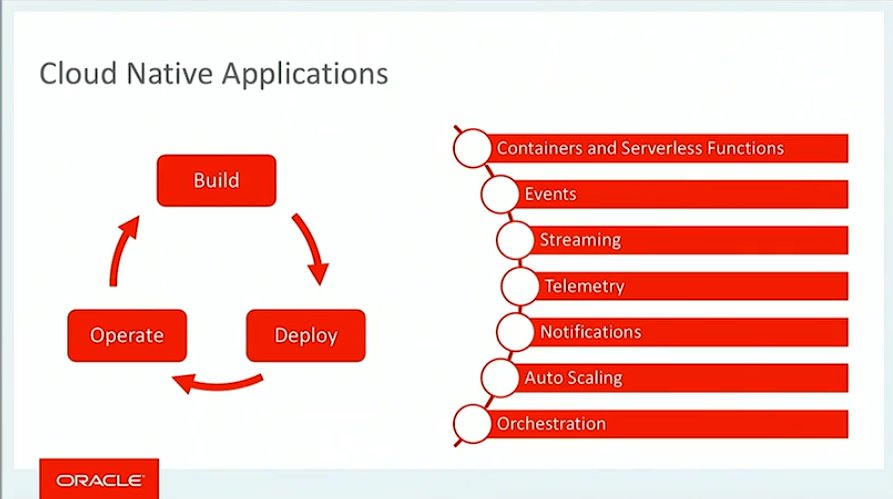
The Orchestration Service for example aims at Infrastructure-as-Code, which is a very important thing for Cloud-native application development, since with that applications become even more independent from the runtime as it’s runtime is part of the software.
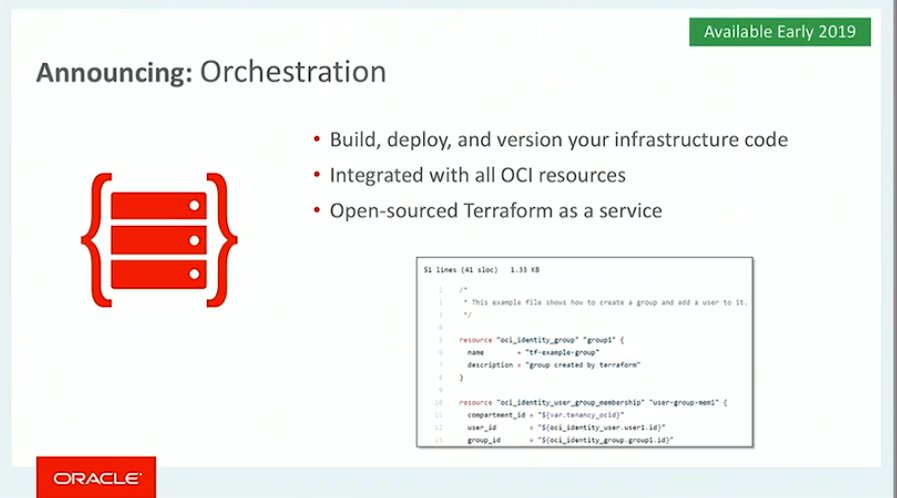
From a technology perspective topics like APIs, Microservice technologies, like Service-Mesh with Istio or Envoy and Kubernetes as the Next-gen application development platform, were prominent citizens especially at Oracle Code One. In addition, the Kafka platform for real-time Data streaming and analytics, Serverless technologies and implementations as well as Machine Learning based on Open-Source technologies and frameworks were on the agenda.
Conclusion
This years Open World was mainly branded by the new Gen2 Infrastructure, the enhancements in this area and the autonomy of certain Oracle Cloud components, like the Database or the Data Warehouse. It seems that at least the Oracle IaaS stack is following a consistent vision and is becoming more mature. Also on the PaaS-level the available product palette seems to become more homogeneous and consistent, since everything converges together from a higher-level perspective. There are still some childhood illnesses, but maybe that’s just a matter of time.
Code One was a conference with many different facets, amazing presentations and awesome speakers. Here developers were able to share knowledge and exchange opinions, about how applications development should be done nowadays. It’s good to see that trend for embracing Open-Source technologies, which I already noticed last year, evolved further.
I am curious to see how the observed trends will develop further. Latest at Oracle Open World and Code One 2019, we’ll see how trend will look like.




 The figure above shows what Oracle Cloud Infrastructure offers in the area of Cloud-native Development. In the following, I’ll give a brief introduction to the services with special focus on the App development & Ops services.
The figure above shows what Oracle Cloud Infrastructure offers in the area of Cloud-native Development. In the following, I’ll give a brief introduction to the services with special focus on the App development & Ops services.